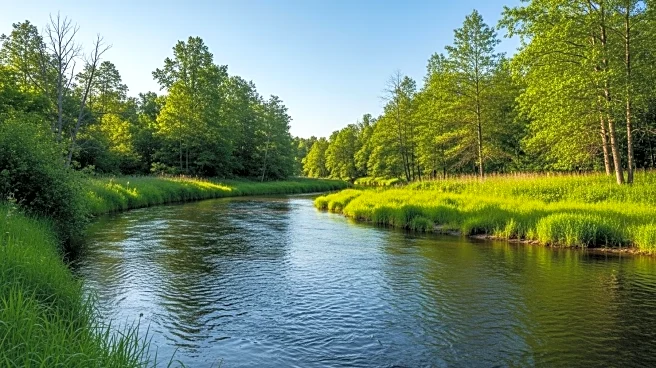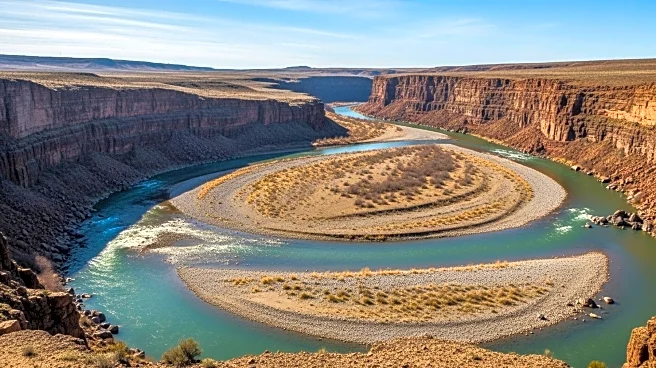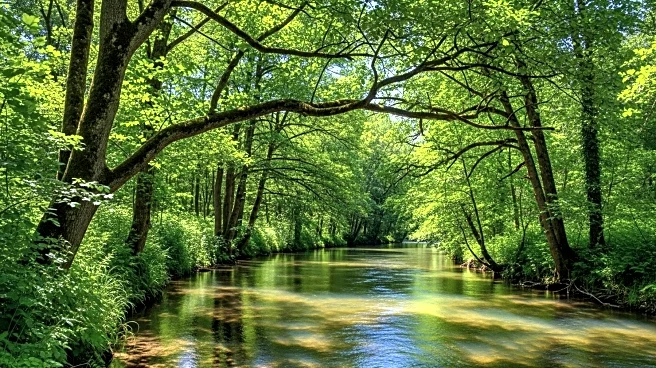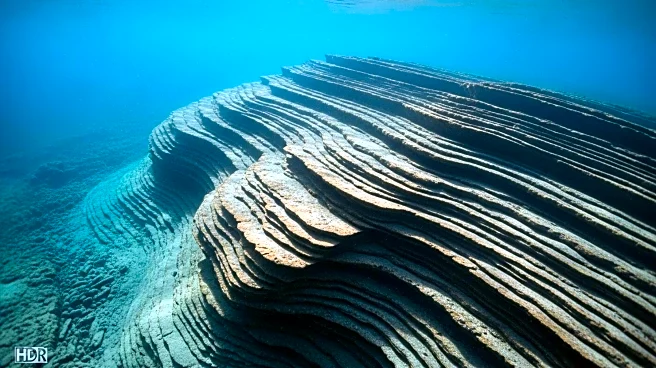What's Happening?
A recent study from Stanford University challenges the long-held belief that the evolution of land plants was necessary for rivers to form meandering patterns. Traditionally, geologists believed that before vegetation, rivers primarily exhibited braided patterns, with meandering forms emerging only after plant life stabilized riverbanks. The study, published in Science, reveals that unvegetated meandering rivers can leave sedimentary deposits similar to those of braided rivers, suggesting a misinterpretation of geological records. This finding is significant for understanding Earth's early ecology and climate, as river types influence sediment, carbon, and nutrient storage in floodplains. Lead author Michael Hasson and his team examined satellite imagery of 4,500 bends in 49 current-day meandering rivers, finding that vegetation impacts the direction of point bar migration, a key factor in river meandering.
Why It's Important?
The study's findings have profound implications for climate science and geological understanding. Meandering rivers are crucial carbon reservoirs, affecting atmospheric carbon dioxide levels and Earth's temperature regulation over time. By demonstrating that meandering rivers existed before the advent of land plants, the study suggests that carbon storage in floodplains has been a significant factor for much longer than previously thought. This could lead to revisions in models of Earth's ancient climate and improve predictions of future climate change. The research challenges the conventional narrative taught in geology curricula, offering a new perspective on the relationship between rivers and plant evolution.
What's Next?
The study opens avenues for further research into ancient river systems and their role in carbon cycling. Scientists may need to reassess geological records to better understand historical climate fluctuations and refine models predicting future climate scenarios. The findings could influence how geologists interpret sedimentary deposits and reconstruct past river geometries, potentially altering the understanding of Earth's ecological history. As researchers continue to explore the implications of this study, it may lead to more accurate assessments of natural climate swings and inform strategies to address human-induced climate change.
Beyond the Headlines
This research highlights the importance of accurate geological interpretation in understanding Earth's climate history. It underscores the need for revisiting established scientific paradigms and encourages a reevaluation of how natural processes have shaped the planet. The study also emphasizes the interconnectedness of ecological systems, where river dynamics and plant evolution play critical roles in carbon storage and climate regulation. By challenging traditional views, the research fosters a deeper exploration of Earth's geological and ecological complexities.











